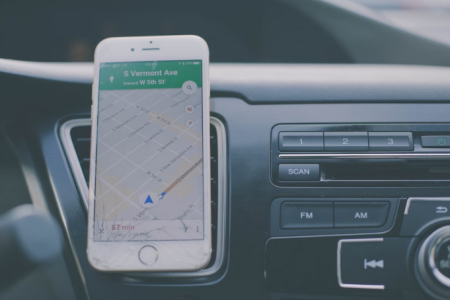Waze vs. Google Maps vs. Apple Maps—which one actually delivers in 2025?
- Replies 0
Getting from one place to another isn’t just about the road—it’s about the tools you use to navigate it. With so many apps offering directions, alerts, and shortcuts, choosing the right one has become part of the journey itself.
Technology keeps evolving, and the tools once considered optional are now essential for daily driving.
Whether you're commuting, road-tripping, or avoiding a slowdown, the app you use can completely change your experience.
Google Maps has had the longest run of the major navigation apps, having launched in 2005 and continuing to dominate globally.
It remains the most downloaded and trusted service, with more than 21 million downloads in 2023 alone.
Its features are broad—including real-time traffic updates, eco-friendly routing, and offline map access for areas with weak signals. For many users, it’s the default for a reason: consistent reliability with minimal surprises.
Waze entered the scene in 2008 with a different angle—real-time user feedback built into the core experience.

Drivers alert one another about accidents, speed traps, and unexpected hazards as they happen. It was acquired by Google in 2013 but still functions as a distinct app with its own personality and fan base.
While Waze can occasionally suggest unusual routes, it’s unmatched when it comes to crowd-sourced traffic awareness.
Apple Maps debuted in 2012 with a rough start but has since seen a major redesign and growing user trust.
It benefits from seamless integration with iOS, offering battery-efficient performance and features like parked car reminders and split-screen 360-degree street views.
Its clean interface and privacy-focused design appeal to those deeply embedded in Apple’s ecosystem.
Although not cross-platform, its improvements over the years have built it a loyal following among iPhone owners.
Each navigation app has its place, and the choice often depends on what you value most while driving.
Google Maps wins in scope and versatility, Waze leads in real-time alerts, and Apple Maps offers polished, iOS-optimized convenience.
Reviews and awards vary, but many sources—including PC Mag—agree that Google Maps remains the overall best, while Waze is ideal for day-to-day driving. Still, no single app fits every scenario, and switching between them can actually be smart.
Read next:

Do you stick to one navigation app or mix it up depending on where you’re going? Share your driving habits and favorite app in the comments—and if one has saved you from a major jam, we want to hear about it.
Technology keeps evolving, and the tools once considered optional are now essential for daily driving.
Whether you're commuting, road-tripping, or avoiding a slowdown, the app you use can completely change your experience.
Google Maps has had the longest run of the major navigation apps, having launched in 2005 and continuing to dominate globally.
It remains the most downloaded and trusted service, with more than 21 million downloads in 2023 alone.
Its features are broad—including real-time traffic updates, eco-friendly routing, and offline map access for areas with weak signals. For many users, it’s the default for a reason: consistent reliability with minimal surprises.
Waze entered the scene in 2008 with a different angle—real-time user feedback built into the core experience.

Waze vs. Google Maps vs. Apple Maps—which one actually delivers in 2025?. Image source: Dan Chung / Unsplash
Drivers alert one another about accidents, speed traps, and unexpected hazards as they happen. It was acquired by Google in 2013 but still functions as a distinct app with its own personality and fan base.
While Waze can occasionally suggest unusual routes, it’s unmatched when it comes to crowd-sourced traffic awareness.
Apple Maps debuted in 2012 with a rough start but has since seen a major redesign and growing user trust.
It benefits from seamless integration with iOS, offering battery-efficient performance and features like parked car reminders and split-screen 360-degree street views.
Its clean interface and privacy-focused design appeal to those deeply embedded in Apple’s ecosystem.
Although not cross-platform, its improvements over the years have built it a loyal following among iPhone owners.
Each navigation app has its place, and the choice often depends on what you value most while driving.
Google Maps wins in scope and versatility, Waze leads in real-time alerts, and Apple Maps offers polished, iOS-optimized convenience.
Reviews and awards vary, but many sources—including PC Mag—agree that Google Maps remains the overall best, while Waze is ideal for day-to-day driving. Still, no single app fits every scenario, and switching between them can actually be smart.
Read next:
- Should you blur your house on Google Maps? Here’s why more people are doing it
- Alert: The $2,000 Google Maps scam putting your home at risk
Key Takeaways
- Google Maps continues to dominate usage among drivers, praised for its all-around dependability and feature set.
- Waze’s strength is in its crowd-sourced updates and alert system that helps drivers respond to hazards in real time.
- Apple Maps has steadily improved since its rocky launch, especially within the iOS environment where it’s optimized for battery life and seamless functionality.
- Each app has a core audience, and having access to more than one gives drivers a strategic edge in different driving scenarios.






